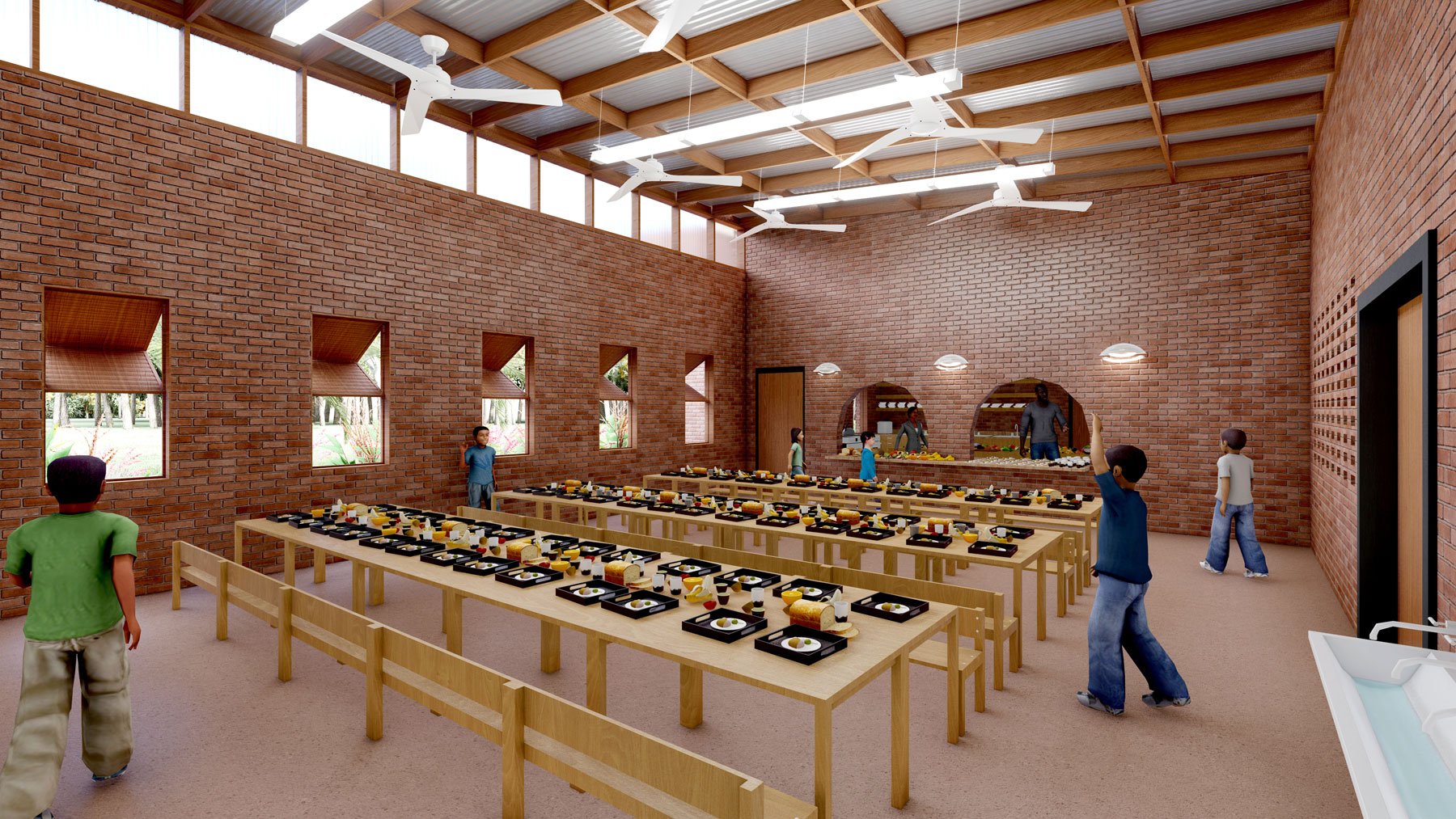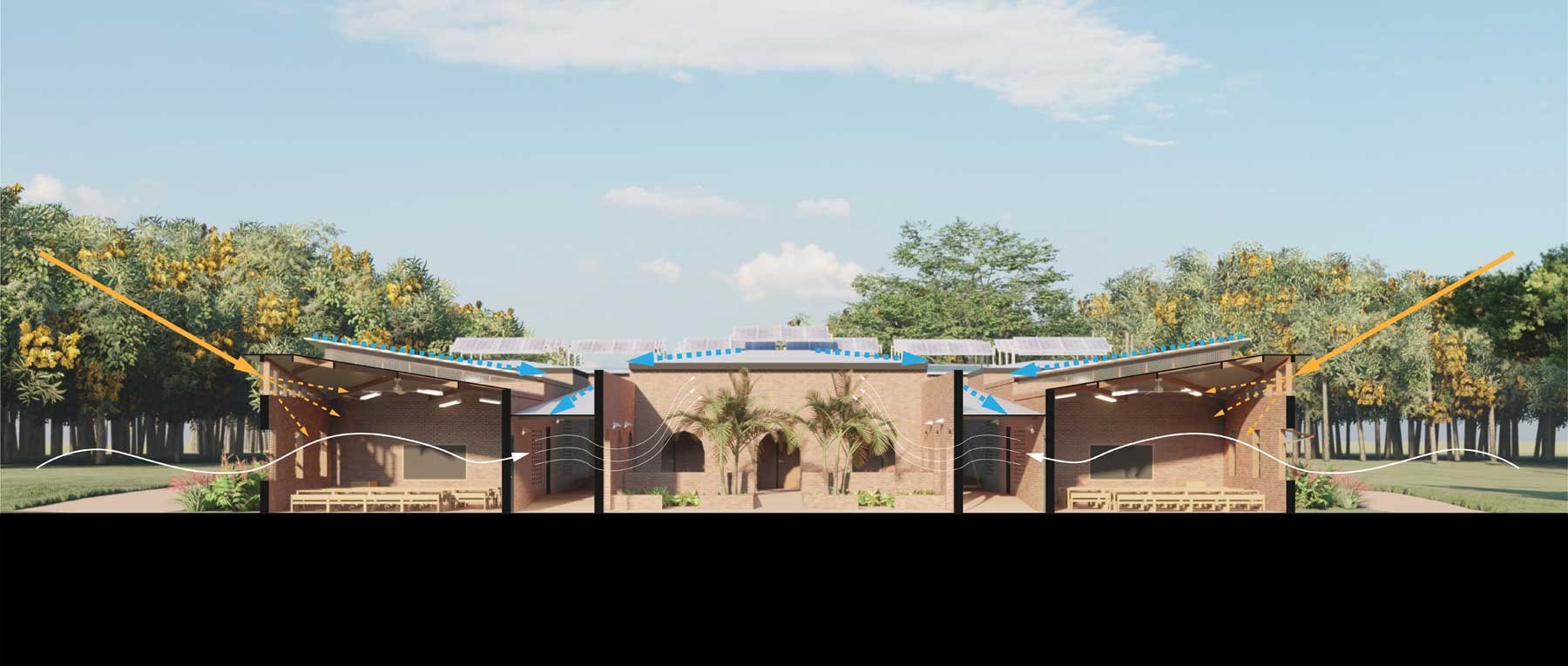
In the Republic of Mozambique, over 70% of the population is illiterate due to lack of schooling that’s influenced by the distance of schools to neighborhoods, cost, traditions, and other reasons. Designed as a prospective solution to this issue and as a proposition for a new type of preschool building, the Escola Da Natureza will be located in the Xai-Xai District between two communities. The architecture focuses on utilizing the local building materials, construction technologies, rainwater collection, passive cooling, and solar powered fixtures to create comfortable educational spaces as well as provisions for the local community.
Blurring the line between the indoor, outdoor, and nature, the preschool has an enclosed orchard that allows teachers and children to have direct engagement and learning about agriculture. Vegetables, fruits, and herbs that are grown in the orchard are used in the kitchen to create homemade nutritious lunches for the children. At the perimeter of the orchard are a series of arched openings that lead to the 4 primary corridors and the covered courtyard; allowing wind to passively enter and cool the spaces.
Following the natural slopes of the site and utilizing local construction techniques, the floors throughout the building are rammed earth that follows the slope of the site, which reduces the amount of necessary sitework. The changes in grade are achieved through 1:20 sloped walkways that allow all children to access all the spaces in the school. These changes in grade are also reflected in the height of the roofs that are taller as the grade increases. When combined with the translucent corrugated polycarbonate clerestory windows, the classroom spaces are lit through the diffusion of sunlight.
In terms of natural ventilation, an architectural feature that is common to the local architecture is a wood shutter with full control over the angle of the wood strips and folding shutter for shade and protection from the rain. Breezes that pass through the shutters from the exterior of the building make their way through the openings in the interior compressed earth block (CEB) walls and into the open orchard; providing a comfortable place to learn. During rainy days, the shutters can be closed and the shades can be adjusted to allow natural ventilation with protection from the rain.
The rooftops feature solar panels and solar heat collectors above the kitchens and cafeteria on a shed roof angled towards the sun. Water from the rooftops make their way to the localized small storage areas at sinks and showers for hygienic purposes. The roofs are also sloped to direct rainwater toward the low point of the site at the north where four large rainwater cisterns store rainwater. Once all the cisterns are full, the extra water is released into a water retention pond that creates a cooling affect during warmer days. These cisterns provide drinkable water to both of the adjacent communities, which brings families to the school on a regular basis. This creates a condition that is beneficial to the families as well as the children who otherwise might be needed by families to travel further and longer for necessary resources and reduce their chances of gaining a formal education.
Escola Da Natureza is built around and with nature to create comfortable and engaging learning environments as well as teaching the children about sustainable ways of living through the architecture that they inhabit. The architecture creates natural and necessary resources for the local communities through its passive design strategies. Ultimately, the goal of the preschool is to create a place that invites the community to be part of the school, view it as a necessary asset to protect, and maintain a steady education for the children.












